2016 Red Jacket Honorees
Inspired leaders for today and tomorrow
In 2014, to mark the milestone of the 10th anniversary of the PharmaVOICE 100, we initiated our version of a “hall of fame" — the Red Jacket Awards.
One of the criteria for being named a Red Jacket is having been recognized as a PharmaVOICE 100, but it’s much more than just that. These individuals, who cross a multitude of industry sectors, have raised the bar in terms of what it means to be an inspired leader for their teams, their companies, their communities, and for the industry at large.
Red Jacket Honorees:
Challenge us to think differently, act differently, and lead differently
They are creating new opportunities to make what was once impossible — possible
They are focused beyond short-term gains and are committed to executing their long-term visions in a tightly regulated and competitive industry
They have a persistence of vision
They are truly transforming the life-sciences industry to create better health outcomes for all
They are inspired leaders for today and tomorrow
Kathy Giusti
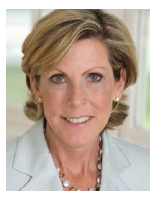 TITLE: Co-founder and CEO
TITLE: Co-founder and CEO
COMPANY: Multiple Myeloma Research Foundation & Multiple Myeloma Research Consortium
EDUCATION: BS, magna cum laude, Biology, University of Vermont; MBA, Harvard Business School
FAMILY: Husband, Paul; daughter, Nicole; son David
HOBBIES: Running, yoga, spinning
BUCKET LIST: Write a book about what she has learned as a patient; travel
AWARDS/HONORS: 2014, The World’s 50 Greatest Leaders list, No. 19 on Fortune Magazine’s Worlds’ 50 Greatest Leaders; TIME 100 List of the world’s most influential people; Woman of the Year, Healthcare Businesswomen’s Association
ASSOCIATIONS: Harvard Business School Healthcare Board, Healthcare Businesswomen’s Association
Standing Up to Cancer
Kathy Giusti is the co-founder of the Multiple Myeloma Kathy Giusti co-founded in 1998 the Multiple Myeloma Research Foundation (MMRF) shortly after being diagnosed with the incurable blood cancer. She founded the Multiple Myeloma Research Consortium (MMRC) in 2004.
Today, the organizations are among the world’s most innovative research organizations and Ms. Giusti is widely recognized as a pioneer of precision medicine, a champion of open-access data sharing, and a strong advocate for patient engagement.
Before this, Ms. Giusti served for more than two decades in the pharmaceutical industry, including leadership positions at G.D. Searle. By applying her business acumen to the science of cancer, the MMRF has removed barriers that impede progress in other research efforts and, in their place, built collaborative research models in the areas of tissue banking, genomics, and clinical trials that have accelerated the pace at which lifesaving treatments are brought to patients and together serve as an end-to-end solution in precision medicine.
 Ms. Giusti is committed to maximizing the patient-impact of these models and has shared her approach with research organizations that are pursuing treatment advances for cancer and other diseases. In 2015, she was appointed to the White House’s Precision Medicine Initiative’s working group, which provided guidance to President Obama on the advancement on the newly launched federal program.
Ms. Giusti is committed to maximizing the patient-impact of these models and has shared her approach with research organizations that are pursuing treatment advances for cancer and other diseases. In 2015, she was appointed to the White House’s Precision Medicine Initiative’s working group, which provided guidance to President Obama on the advancement on the newly launched federal program.
Earlier this year, she was named co-chair of the Harvard Business School (HBS) – Kraft Precision Medicine Accelerator, an innovative program that aims to identify and solve challenges slowing the advancement of precision medicine, disseminate best practices and models to overcome these challenges, and, ultimately, enable the faster commercialization of high-impact innovations.
Ms. Giusti’s leadership has earned her several prestigious awards and recognitions. Most recently, she was named by Fortune Magazine as one of three business leaders who are disrupting medicine. She has also been named one of Fortune Magazine’s Worlds’ 50 Greatest Leaders and one of the TIME 100 world’s most influential people. She was honored as an Open Science Champion of Change by the White House and has been awarded the American Association for Cancer Research Centennial Medal for Distinguished Public Service, the Harvard Business School Alumni Achievement Award, and the Healthcare Businesswomen’s Association’s Woman of the Year Award.
PV: You have been identified as one of the most influential leaders in the world; how would you describe your leadership style?
Giusti: I would describe my style as visionary and urgent. Constantly monitoring the rapidly shifting oncology landscape has been key to setting a compelling vision for our team. Once the vision is set, the next phase is setting very clear, very strong goals and the strategies to achieve those goals. Until we have found a cure, our work will always be driven by a sense of urgency to do more for patients faster.
PV: You are highly regarded as an innovator; how do you drive innovation in your organization and throughout the industry?
Giusti: The most important thing I do to drive innovation is to continually study and evaluate what science is moving quickly, what is not moving quickly, and what looks most promising for patients. At the same time, I am always looking for the barriers that prevent speed and efficiency and quickly identifying solutions to remove those barriers.
The same is true for technology. I watch that sector very closely to make sure we swiftly adapt and maximize the use of new technologies to ensure continued progress. An example is the work we’ve done through our CoMMpass trial, a longitudinal study to identify specific molecular alterations that are driving myeloma.
One thousand patients agreed to have their cancer genome sequenced at diagnosis; some will also be sequenced again when they relapse.
Along the way, we’ve opened up and shared these data — the most robust look at myeloma seen to date — with qualified researchers through our Researcher Gateway, allowing scientists from around the world to be part of the cure.
But we can’t stop there: now, we must ask, how do we aggregate and analyze additional data sets with CoMMpass data so we can find even more targets, more drugs, and use data to optimize our clinical pathways?
PV: What is the best way to have innovation trickle down to the patients?
Giusti: When I founded the MMRF, there were no new treatments and few clinical trials. Patients lived, on average, about thee years. By working closely with partners in the biotech and pharmaceutical industries, academia, and the cancer community to inject speed and efficiency into the process of discovering and developing new drugs, myeloma patients now have 10 new treatments — four treatments FDA approved in 2015 alone — that have almost tripled their survival and given thousands of others living with this incurable disease a fighting chance.
I know that, through this collective approach, the same can be done in other cancers.
PV: Do you think the healthcare ecosystem will look different in next five years?
Giusti: Yes. Three ways in particular stand out. First, the system is becoming more collaborative. Ten years ago, everybody was working in his or her individual space. Now, we are seeing teams or even teams of teams approach the same research questions and then build upon each other’s discoveries.
Second, treatment strategies are becoming much data driven. Access to genomic data and the ability to aggregate and analyze these data alongside clinical data and other data streams for important clinical insights. Should a patient be on maintenance therapy? How long should he or she be on maintenance therapy? What is the optimal maintenance therapy? Once we drive the best new drugs to the market, the next step will be looking at authorized clinical pathways to understand the best way to use those drugs.
And third, patients will increasingly be looked to as partners in the research process, not just participants. Without patient tissue, and personal and health data, progress simply is not possible.
PV: How would you like to be remembered in the industry?
Giusti: First, I would really would like to take my business knowledge on the models, especially in precision medicine that we’ve been able to develop at the MMRF, and be able to share those best practices across other cancers.
This is precisely why I took a position at Harvard Business School and am co-chairing the HBS-Kraft Precision Medicine Accelerator — because this gives me the opportunity and resources to do this, and to do it really well.
And second, I hope to set an example for other patients and help them to understand cures cannot and will not be found without our active participation in the research process. It’s up to us to know how to bank our tissues, to get our data, to share those data.
PV: What role do you play in mentoring the next generation of leaders?
Giusti: There is an incredible need for basic scientists, IT experts, and bioinformatics specialists — a need that will only continue to grow as technology evolves. It’s up to us to inspire young people and entice them to come to the field and be part of curing cancer and other diseases. Part of that of course is thinking critically about how we can support the next generation with better funding opportunities and other resources so they can focus on science rather than on funding their lab.
PV: What needs to change so that the industry has the talent to be successful in the future?
Giusti: There is no easy answer or quick fix, but, to start, we must continue to recognize the importance of healthcare in the U.S. economy and for the betterment of all people. We must also compensate and fund the scientific community in ways that attract the best talent to the field; this is not an area in which we can afford to not to invest.
And finally, we must identify and share best practices that incentivize all the players in the continuum to collaborate and work together toward cures and to do so quickly.
Michelle Keefe
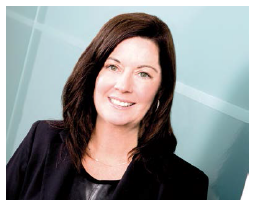 Title: Group President
Title: Group President
Company: Publicis Health
education: BA, Marketing, Seton Hall University
Family: Husband, Ralph; daughter, Taylor; and three dogs
Hobbies: Golf, travel, New York Yankee’s baseball
Bucket List: Skydiving, racing in an Indie 500 car, and attending The Master’s Tournament, going on an African safari, and traveling to Australia, including sailing on the Great Barrier Reef
Awards/Honors: PharmaVOICE 100, 2014, 2015; Visiting Nurse Service of New York’s CEO Innovation Award; Pfizer Hall of Fame
Associations: Healthcare Businesswomen’s Association (HBA)
Social Media:
Tweet at: @pTouchpoint
Leading with Purpose and Sincerity
Michelle Keefe, group president of Publicis Health, has made a tremendous impact at the agency through her ability to identify and capitalize on opportunities in the marketplace to improve competitive performance and deliver exceptional results. Her proven success in creating and launching high-performing cross-functional teams have been recognized across the Publicis Health network as well as leading to multi-million dollar results in existing, start-up, and acquisition environments.
She is an inspiring leader who is easily accessible to all levels of the organization and her authenticity and openness are changing others’ perspectives on how to lead and interact with employees.
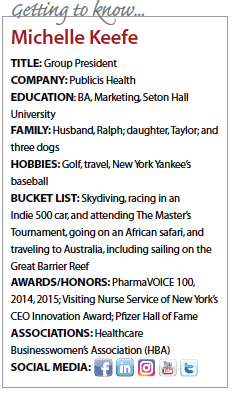 Before being named group president of Publicis Health, which encompasses best-in-class commercialization and clinical agencies PDI, Publicis Touchpoint Solutions, and Tardis Medica Ms. Keefe was president and CEO of Publicis Touchpoint Solutions. While at Touchpoint, she was responsible for overseeing a comprehensive and integrated array of outsourced life-science message delivery channels — for field teams, inside teams, and clinical education teams — plus full-service support solutions.
Before being named group president of Publicis Health, which encompasses best-in-class commercialization and clinical agencies PDI, Publicis Touchpoint Solutions, and Tardis Medica Ms. Keefe was president and CEO of Publicis Touchpoint Solutions. While at Touchpoint, she was responsible for overseeing a comprehensive and integrated array of outsourced life-science message delivery channels — for field teams, inside teams, and clinical education teams — plus full-service support solutions.
Today, Ms. Keefe has overall responsibility for Publicis Health’s centers of excellence, which include promotional and clinical message delivery, as well as field and contact center channels and support solutions. She develops collaborative partnerships with clients and ensures cross-channel solutions are designed to optimize ROI and improve the lives of patients.
Before joining Publicis, she was VP, business development with The Visiting Nurse Service of New York, the largest nonprofit homecare provider in the United States.
Ms. Keefe works hard each and every day to provide the leadership and opportunities for members of the organization to help clients change the way healthcare is defined in the United States. Her passion and customer focus inspire her teams to always look for better, faster, and more efficient ways to provide critical answers and to drive process improvements.
Ms. Keefe is valued for her true appreciation of the human aspect of the business, recognizing work/life balance of employees while leading the company with a sure and steady hand.
Under her leadership, Publicis employees are afforded the opportunity to give back to the community in many ways as well as to grow professionally, while consistently serving clients’ needs.
PV: How does your leadership style inspire your teams to reach their personal and professional goals?
Keefe: Over the years I’ve been fortunate to learn a lot from some really phenomenal leaders in the life-sciences industry, and I’ve tried to incorporate some of their approaches to leadership that motivated me as an individual into my own leadership style.
I think the second thing that helps inspire others to reach their personal and professional goals is that I have a real passion for what I do. What we do is fun and it’s fulfilling. I love to get up every morning and come to work so much so it doesn’t even feel like work. And I think this attitude shows in how I approach the people who I work with.
I also believe it’s important to help each member of the team see how his or her work connects to the overall vision of the organization. I try to paint a clear picture of our priorities. I want to support team members in achieving whatever project they’re working on or whatever goal they’re working toward.
One of the main things I think I do here — and the reason this team has been so successful — is I assign colleagues to cross-functional assignments that are often out of their comfort zones. This approach allows them to grow and expand their capabilities. I find when people are uncomfortable in what you’ve asked them to do, this process generates new approaches, innovative thinking, and a better product than always tapping the person who is the subject matter expert. This approach has been one of the methods that has really inspired my team members to reach their personal and professional goals.
I think I get the biggest joy out of seeing people surpass what they themselves thought was possible. My job as a leader is to maximize the full potential of every individual who works with me and help them believe they can do more than they think they’re capable of.
I also encourage my people to get involved in things that matter to them outside of their professional lives and focus on what’s important to them personally. And when they do that they develop another set of capabilities that helps them in their professional life.
I also encourage people to align their personal and professional goals. I think it’s very important to give people the leeway to achieve their goals and to work autonomously on their teams to get to the ultimate result that they’re accountable for. I think people really appreciate being able to get to achieve success in their own way.
PV: How do you strive to drive innovation in your company and, thereby, through to the industry?
Keefe: We try to do this in multiple ways. First, we have innovation as one of our five strategic imperatives for our business and we’ve had it for the last three years. Under the umbrella of innovation, there’s obviously a lot of sub-goals, but my main goal is to make sure innovation is part of the DNA of the culture of the company. Each member of the team is working on specific innovation ideas to either improve our internal processes or develop an innovative solution for our customers. Everybody has innovation tied to their goals regardless of their role in the organization.
We also have a separate innovation team — a cross-functional group — that mines ideas both internally and externally. They bring these ideas to the executive team and if we all agree that the idea or ideas are really groundbreaking or provide a clear differentiator for the marketplace or will help us be more innovative in how we work internally, we’ll fund those ideas.
And to generate excitement, we have an innovation contest where our people compete and we reward the team members who have an idea that will accelerate our business or drive better customer satisfaction.
When I look back and think about where some of the best ideas have come from, they came from the people who are front and center with our customers and ideally, that’s what we want. We want the people who are closest to customers bringing us the next best idea.
PV: Do you believe that innovative thinking can be taught or do you believe it is part of somebody’s DNA?
Keefe: We debate this all the time as a leadership team; I believe everybody has the ability to be innately innovative. I think it’s about giving people the time to clear their mind from the day-to-day reality so they can think about how to do something differently. When people have a secure space to think differently and are able to step away from the woods so they can see the forest through the trees, I think everybody has the ability to be innovative.
At the same time, I do think some people are more creative than others, which is part of their DNA. Many innovative ideas come from one’s personal experiences and being observant about what’s happening, which can be taught.
PV: How do you think the life-sciences industry is going to evolve over the next few years?
Keefe: I have the privilege to work across a very broad slate within the life sciences. The next few years will be the era of the patient, and the life-sciences companies that can adapt to this shift will thrive.
Patients have more information than ever to make decisions about their health, but they’re very overwhelmed by the volume or are just not ready to deal with the significant data that’s in their hands. It’s going to be important for life-sciences companies to continue to evolve what I call their wraparound services to support patient decision-making. As patients receive more and more information, they’re going to need more and more support to understand what’s the best path forward for them individually.
I also think that explosive growth of biologic and specialty brands are going to be critically important. Clinical support, patient navigation, and reimbursement support are all areas that life-sciences companies will need to develop to support the physicians treating these special patient populations.
The emergence of the organized customer — ACOs, IDNs, etc. — where the patient is at the center will also become more prominent. These organizations are talking about how value-based healthcare with patients in the center is going to become the new norm in healthcare delivery.
PV: What mark would you like to leave on the industry as your legacy?
Keefe: The legacy that I would like to leave is that all my efforts of leading teams and developing talent led to innovative strategies that improved patient and physician decision-making and improved overall health outcomes. I don’t know anybody who is in the life-sciences industry who hasn’t told me they got into this industry because they wanted to make a difference in the quality and quantity of life for patients.
PV: What advice would you give to your younger self?
Keefe: I would tell my younger self that you can have a very highly rewarding personal and professional life and they can coexist peacefully.
PV: How important is it for you to mentor and develop the next generation of leaders?
Keefe: Candidly, I think this it what I love most about my job. The opportunity to share my experiences and help people achieve the things that are most important to them both personally and professionally is really exciting for me. Throughout my career I’ve been involved in a lot of mentorship programs. I’ve been a mentor and I’m currently a mentor in the HBA’s Metro Chapter. It’s such a rewarding experience to work with these highly talented women from all over the industry and support them in their personal and professional goals. I feel like I learn more from them than they learn from me.
Stuart W. Peltz, Ph.D.
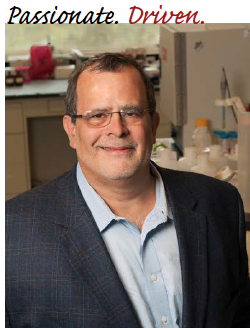 TITLE: CEO and Co-Founder
TITLE: CEO and Co-Founder
COMPANY: PTC Therapeutics Inc.
EDUCATION: BS, University of Illinois, Champaign-Urbana; Ph.D., McArdle Laboratory for Cancer Research, University of Wisconsin
FAMILY: Wife, two brothers
HOBBIES: Reading, movies, wine, architecture, art, travel, and sports
AWARDS/HONORS: 2014 Dr. Sol J. Barer Award for Vision Innovation and Leadership; 2014 Legend of Technology Award — New Jersey Technology Council; 2014 Outstanding Innovation Award — Rare & Orphan Advocacy and Research (ROAR)
ASSOCIATIONS: Chairman, BioNJ; Fellow of the American Academy for the Advancement of Science; Board of directors for the Biotechnology Innovation Organization (BIO); BIO’s Emerging Companies Section Governing Board
Disrupting Science
Through innovation and limitless passion, Stuart Peltz, Ph.D., has led PTC Therapeutics in the development of a rich pipeline of therapeutic molecules targeting rare and neglected diseases.
Dr. Peltz is the co-founder and driving force behind the company’s mission to leverage its knowledge of RNA biology to bring novel therapeutics to patients affected by rare and neglected disorders. He challenges the organization to move faster, think bigger, and not accept no in its quest to bring important treatment options to patients.
PTC was born from cutting-edge science that Dr. Peltz researched during his years as a professor in the Department of Molecular Genetics and Microbiology at Robert Wood Johnson Medical School, Rutgers University. Dr. Peltz recognized the potential of post-transcriptional mechanisms to advance medical science and help patients in need. His work was instrumental in identifying and characterizing components of multiple mRNA decay and translation pathways.
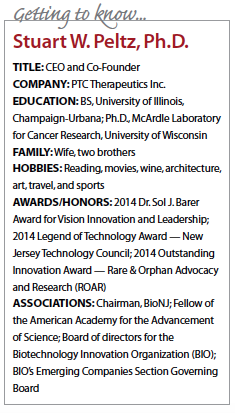 Very few biopharma CEOs have the opportunity to take their own scientific idea from a concept to a commercialized treatment. In 2014, PTC became a publicly traded company and saw the fruits of its labor when its lead product, Translarna, was approved in the EU as the first treatment for Duchenne muscular dystrophy (DMD). Dr. Peltz describes receiving approval for the treatment as a great thrill.
Very few biopharma CEOs have the opportunity to take their own scientific idea from a concept to a commercialized treatment. In 2014, PTC became a publicly traded company and saw the fruits of its labor when its lead product, Translarna, was approved in the EU as the first treatment for Duchenne muscular dystrophy (DMD). Dr. Peltz describes receiving approval for the treatment as a great thrill.
The company continues to advance its research pipeline with programs in other genetic disorders and oncology. Dr. Peltz’s goals are to make Translarna available to patients across the globe and to work to bring multiple innovative products to patients. He wants to continue building PTC to benefit the patients, allow employees to grow and develop, and bring value to investors.
Dr. Peltz embeds a culture of creativity, collaboration, and caring for employees and patients alike. He has established an environment that encourages risk taking, making sure employees know their ideas matter and letting their ideas be shared with the team. This leadership approach has a tremendous positive impact on the organization, in that every employee feels valued and motivated to do their best.
He cares deeply about the communities that PTC’s therapies are aimed toward and actively works as an ally with the Duchenne community.
PV: How do you believe your leadership style inspires others to reach their personal and professional goals?
Peltz: As a founder of the company, I had the opportunity to shape PTC’s culture and I think our company culture inspires our employees.
When I started the company, I wanted to create an environment that I wanted to work in.
I like to collect smart people and make them think. I like to challenge them and be challenged myself. I think we can all make each other better, make our ideas better, make the company better, so we can make the lives of our patients better. That’s what it’s all about.
Over the years, I’ve learned some things that have really shaped my leadership style and have helped to inspire the innovation at PTC. First, the whole is greater than the sum of its parts. Employees refer to my office as ‘the living room,’ where we gather to argue and debate ideas. I work to make sure the living room is an inclusive environment where employees feel safe to speak their minds and challenge each other.
Second, I make sure everyone has a voice. I tell employees: ‘We hired you because you are smart and we want to hear from you. I want you to have an opinion and defend and debate it.’
Next, I believe the best ideas win. We have a very flat organization. Everyone contributes to making ideas the best they can be.
I also treat people like family. I make sure we stay connected. We celebrate birthdays, holidays, have breakfasts, coffees, and beers. We care for each other, our community, and for the needs of our patients. This camaraderie allows us to pull together when it gets tough.
I strive every day for us to be better than we were the day before. I define a goal and go for it. I encourage our team to never stop trying — we only lose when we stop trying and stop fighting for our patients.
Finally, I have a no jerks policy. We look to recruit the right people who fit with our culture and share our values. These are people who are critical, not cynical, of what we do, but not of each other. We look for people who want to change the world — or at least change something big — who are more fearful of not daring to do great things than of failing.
PV: What do you think the future of the life-sciences industry will be like?
Peltz: This is a hard question for a guy who likes to live in the moment. It’s difficult to predict direction of research and I think that’s a good thing. What we need is to continually incentivize people to build things. There are so many great ideas to test and try, and we need a strong life-sciences ecosystem so that these ideas can flourish.
We need to foster an environment that allows people to try lots of things — such as farming; you plant something and see if it grows. We need good science going on in academic institutions, and we need biotech companies to continually build off these ideas and test them. Then we need bigger biotech and pharma companies to actually execute to get to end game toward approval.
We also need to continue to invest in our universities and science infrastructure to develop the next generation of great scientists who can discover the next round of medical breakthroughs.
There is a need for more innovative technologies and less me-too drugs. We have seen a step in this direction as companies shy away from blockbuster drugs to a focus on personalized medicine. I see this continuing as we gain an even better understanding of different diseases.
I hope the FDA continues to create incentives that encourage and fuel biotech research. Anything that can help speed the process for drug development is a step in the right direction. The agency also needs to be more flexible to allow for processes that can appropriately assess the value of new innovations.
PV: What mark would you like to leave on this industry as your legacy?
Peltz: When we founded PTC 18 years ago, I hoped to transform the approach to medicine and bring treatments to patients with life-threatening diseases. I wanted to break barriers and do disruptive science.
Duchenne muscular dystrophy (DMD) is a devastating rare disease and PTC was the first company to begin studying this disease 18 years ago.
No one was really focused solely on RNA biology and I believe we were disruptive; now there are more than 20 companies studying the disease.
We have developed the only approved therapy to address the underlying genetic cause of the disease due to a nonsense mutation, which represents about 13% of the boys with DMD. I have gotten to know this community very well, and more than anything for the boys that this disease effects and their families, I want to see continued innovation in this area and increased access to life-changing therapies for all these boys.
PV: What advice would you provide to future leaders?
Peltz: Be realistic and optimistic. See the best in people and situations while being critical, but not cynical. Motivate your team to dare to do great things, to take risks.
Christine Pierre
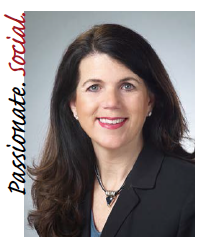 TITLE: Founder and President
TITLE: Founder and President
COMPANY: Society for Clinical Research Sites
EDUCATION: Nursing, Prince George’s College
FAMILY: Husband, four children, grandchildren
AWARDS/HONORS: 2011, the National Association of Professional Women (NAPW) named her “Professional Woman of the Year
ASSOCIATIONS: ACRP, DIA, CISCRP, CTTI, Hands Across The Americas
Setting Her Sights on Sites
Christine Pierre is the founder and president of the Society for Clinical Research Sites (SCRS). She founded SCRS in 2012, six years after orchestrating the first very successful Site Solutions Summit under the umbrella of RxTrials, the CRO that she founded and still serves as a member of its board. Her mission for SCRS is to “unify the voice of the global clinical research site community for greater site sustainability."
She has elevated the voice of sites to a new level and is passionate about communicating the role they play in the clinical research ecosystem. She is revered by colleagues, peers, and the sites she serves for her passion, vision, and unabashed advocacy.
SCRS was founded in response to the growing need for a trade organization representative of the needs of clinical research sites globally. SCRS currently represents more than 2,600 research sites in 42 countries. Under Ms. Pierre’s guidance and leadership, SCRS has become not only an active partner in industrywide initiatives and dialogues focused on improving the clinical research enterprise but she and her organization are moving the needle in meaningful ways.
Ms. Pierre describes the founding principle of the organization: “We are all aware that as an industry we currently have an unsustainable model — for all stakeholders. Sites represent the largest number of providers to the industry; therefore, their impact on this process cannot be underestimated. Sites have long been the silent partner in the research enterprise, and SCRS ensures they are no longer passive participants by catalyzing dialogue with industry leaders and working to find solutions through collaboration."
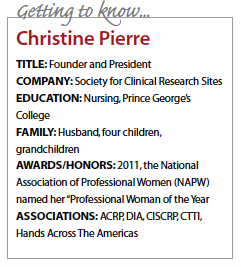 She is held in high esteem as a great collaborator, admired as an innovative thinker, and the host of individuals who she has mentored over the years regard her as a guiding force.
She is held in high esteem as a great collaborator, admired as an innovative thinker, and the host of individuals who she has mentored over the years regard her as a guiding force.
Ms. Pierre has served as chair of the board of the Association of Clinical Research Professionals (ACRP) and on numerous editorial boards of industry publications. She is currently a member of the steering committee of the Clinical Trials Transformation Initiative (CTTI), and is on the board of advisors for both the Center for Information & Study on Clinical Research Participation (CISCRP) and Hands Across the Americas.
In 2011, the National Association of Professional Women named her Professional Woman of the Year. Ms. Pierre co-authored the book Responsible Research: Guide for Coordinators. She holds a degree in nursing and is an avid philanthropist for many organizations.
PV: How do you believe your leadership style inspires others to reach their personal and professional goals?
Pierre: I believe that a small group of highly engaged people can achieve really big things. I would say my role as a leader is that I see more in people than they see in themselves. I push my folks, coach them, and support and guide them to help them see what they can achieve for themselves. I think my leadership style inspires others to reach the goals that they don’t otherwise think are possible.
PV: What was the spark to start SCRS and how do you strive to continue to drive innovation through the organization and the industry?
Pierre: The spark for SCRS came from the fact that I spent so many years at the site level and I saw so much opportunity for sites to be regarded as the stakeholders that I always thought that they were and could be.
Within SCRS we developed methodologies and processes that provide metrics for not just the sites but the community and industry at large.
I’m always scanning what’s going on and when I see things that aren’t working as optimally as I think they could be, whether it’s in my own organization or the industry overall, I take a hard truthful look and then ideas around innovation flow.
I then behave as if that innovation is already in place and it’s almost as if we have to catch up to it. We keep working on the idea and shaping it until it becomes what I think it should be. It’s not always perfect, but I’d like to think it’s always better than what we had started with.
One example involves a patient who was on a panel I was moderating. His name is TJ Sharp — a 30ish-year-old man who had stage IV melanoma — who talked about his experience with a Phase I clinical trial, his first experience as a trial subject. He related that he moved to the research center to begin the study only to have to wait weeks before the study initiated. He learned the reason the study didn’t start was because the site hadn’t been able to get the contract negotiated and finalized. He told the audience he eventually found the sponsor and made a phone call saying: “To you it’s a document and to me it’s my life." And so on that stage three years ago at the SCOPE conference, I said to him that I would do everything in my power to bring this issue to the attention of the industry and have companies understand that patients’ lives are truly being lost because we are spending months — plural — negotiating contracts, contracts that by and large are pretty much the same from study to study and even consistent sponsor to sponsor.
I approached TransCelerate and ACRO (Association of Clinical Research Organizations) and asked them to be part of what’s called the Clear Project. The idea is to identify the clauses that matter within the contract that we all continue to renegotiate over and over, which delay clinical studies from starting. Patients like TJ are waiting for us to do what’s right, and we just do what’s long.
TransCelerate, ACRO, and all of the SCRS member companies as well as non-TransCelerate sponsors and non-ACRO CROs, have identified five clauses that matter and all of these companies have come together and written standard language that is currently in front of the TransCelerate members and ACRO members for endorsement. We are about 90% of the way there. We should never have to hear another patient say: “To you it’s a document and to me it’s my life." TJ, by the way, to finish the story, is doing extremely well and is in his third clinical trial and he’s just great.
This October at the next Global Site Solutions Summit in Boca Raton, Fla., we will be releasing the five contract language clauses that we hope will be adopted within the industry.
Another example of a process that needs innovating is the site payment structure. At SCRS, we know that one of the pain points for the sites is the broken site payment structure. And we talk to all of our partners, honestly I will talk to anybody who will listen about the need to change the payment structure. To address this issue, we can go about it at a couple of different ways. One is the sites can keep just asking and asking, or we at SCRS could take on an initiative.
Two months ago, SCRS kicked off the site payment initiative, and it’s being spearheaded by Novartis, INC Research, and HCA as our site representative. SCRS’s role, I believe, is to bring issues to the forefront and to work with industry leaders to identify solutions. While those solutions aren’t always provided by us, the intellectual capital is provided by us and our member companies and our other stakeholders.
It would be safe to say I have slides that are more than 20 years old talking about the issue of site payments, so I am very happy that we are moving toward a solution.
The other issue that plagues the sites is that they don’t get feedback on how they are doing on any particular study except for recruitment. A couple months ago, SCRS initiated the Site Study Dashboard initiative. This initiative is co-chaired by representatives from Allergan, Quintiles and Apostle Clinical Trials, and has the support of a number of pharmaceutical companies and CROs.
We know that FDA inspections continue to highlight recurring issues with site performance and increased incidents in similar findings over the past 10 years; however, 76% of sites confirm in an SCRS survey that they never receive feedback from sponsors or CROs on their study performance, except for recruitment metrics. In the same survey, 62% indicate receiving feedback would definitely allow them to improve the quality from their site. The Site Study Dashboard initiative is responsible for the creation of metrics to be measured as an industry standard and recommendations for its use. The Site Study Dashboard is intended to provide sites valuable feedback on study metrics that matter and to encourage the exchange of that information in a collaborative environment.
Again, in October at the Global Summit, we will be rolling out the 10 metrics that are important to sites and that they want feedback on from sponsors and CROs. This will allow sites to improve their performance to meet the expectations of sponsors, regulators, and patients. This will let sites also enhance their own operations and celebrate successes and focus energies where they should be.
PV: What do you think the future of the industry will look like in five years?
Pierre: I think the next few years in the industry are going to be really dynamic and it’s going to be exciting. I think the next few years are going to be really game changing for all of our stakeholders and, ultimately, for our patients. I see the collaboration that’s currently just becoming part of the fabric within the life-science industry becoming more tightly woven and eventually will be the norm as opposed to the exception. I think that through this ongoing collaboration as an industry we are going to be able to make great strides, and to me this is really exciting.
PV: What mark would you like to leave on this industry as your legacy?
Pierre: I would like to be known as someone who really cared and worked for the sites to be included as an integral partner with the other life-sciences organizations. Also, I hope that what I built or contributed with others will continue to contribute to the industry, especially sites, in a positive way.
PV: How important is it for you to mentor the next the generation of leaders?
Pierre: Mentoring is part of my DNA. It’s just who I am, it’s what I’ve always done. Mentoring is second nature to me. Maybe it’s my background as a nurse, but I feel it’s important to always speak on behalf of people who may not have that strong of a voice and to give them that voice.
At SCRS mentoring is one of our four pillars: advocate, educate, connect, and mentor. It was very purposeful when we created SCRS that mentoring was one of the four pillars that we were going to stand our whole organization on.
I believe as leaders we have an obligation to mentor the next generation. If we don’t, who will?
I think if you’re really strong in who you are as an individual and as a leader, you don’t question mentoring. It’s your obligation. It’s your right. It’s your privilege to help your organization, to help the industry grow, and to help society be a better place. All of us have something to share and we all have something that we can pass forward. I would hope that everybody would do that.
Recently, I had the ocassion to speak to a group of 350 people at a client meeting and after the program a young lady emailed me and she said: “You are never going to remember me, but 27 years ago, you took me to lunch at the train station in Washington, D.C., and you talked to me about how to set my career in motion. I just wanted to thank you." I was amazed that someone would remember something I said 27 years ago.
PV: What advice would you give to future leaders?
Pierre: Follow your passion, always. When you’re passionate about something it comes through. If you are true to your passion and everything that evolves around it, you have the ability to make an impact. And it’s such a great ride, which is how I have felt for almost three decades. It’s hard work, it’s challenging work, it’s exciting work, it’s privileged work, but it’s never drudgery. It’s always exciting to be part of this industry.
Mike Rea
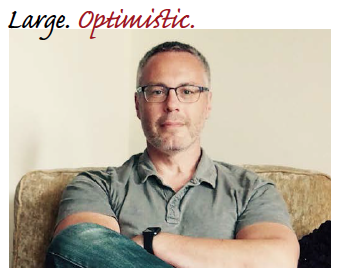 TITLE: CEO
TITLE: CEO
COMPANY: IDEA Pharma
EDUCATION: BSc, University of Newcastle upon Tyne
FAMILY: Wife, Clare; children Michael; Imogen
HOBBIES: Cycle, play guitar, own an independent record label, listen to far too much music, bake sourdough bread
BUCKET LIST: Take a trip to Vietnam and another visit to the Nurburgring
SOCIAL MEDIA:
TWEET: @IDEAPHARMA
The IDEA Man
An inspiring leader and mentor, Mike Rea, CEO and founder of IDEA Pharma is regarded throughout the industry as a thought leader and sought out by innovative thinkers to bring insight into challenging market situations.
Mr. Rea has worked in global pharma strategy for more than 20 years, and has developed global marketing solutions for most of the world’s top 10 pharmaceutical companies, helped lead the strategic direction of more than 50 pharmaceutical brands, and shaped the path and current standing of many of the brands regarded as household names.
In 2015 alone, IDEA has been involved in positioning three of the top 10 blockbusters, and more than half of the fastest-growing drugs in the past five years.
He continues to challenge the pharmaceutical industry into adapting to better, more logical ways of conducting drug development, based around early positioning of new drugs to ensure they deliver value to the market, rather than simply get onto the market.
As a leader, he has built a dynamic environment where thought leadership is actively encouraged and where everyone can have input — this is particularly important when it comes to ideating around creating powerful marketing strategies for clients’ molecules. According to Mr. Rea, ideation is the process of building ideas and ensuring the potential or the talent of a molecule can be thoroughly explored, and the range of strategic options and associated risks are identified for investigation and assessment before key decision making and lock-down of the development and marketing process. Further, ideation early in development ensures active development of the product idea and the creation of a roadmap for access to high value space in the market.
In 2014, he launched id – the science of behavior, a special unit under IDEA Pharma, which is dedicated to uncovering the drivers of behavior, using real psychology.
Additionally, Mr. Rea is known for creating and compiling the annual Productive Innovation Index (PII), which ranks those companies best at successfully bringing innovations to the market. As a follow up to the PII, Mr. Rea and his company launched in 2015 the IDEA Index, which celebrates those companies that either can’t be included in the PII by revenue, that innovate in ways that aren’t about new chemical entities making it to market, or that just haven’t had the time to make that top 30 yet. The IDEA Index purely focuses on the biopharma companies that excite IDEA Pharma the most and that are expected to drive the industry in the next five to 10 years.
He has been named one of the Top 10 Innovators in pharma by PharmaPhorum, and was named one of PharmaVOICE 100’s most inspiring people in healthcare in 2011, 2013, and 2015.
PV: What is your leadership style?
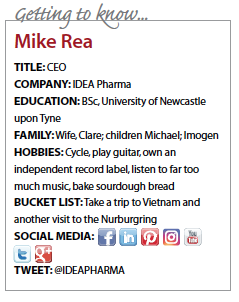 Rea: I don’t approach leadership from an academic perspective, meaning it hasn’t been a purposeful part of my career development to become a leader. I think people are enthused and passionate about my vision. I think if I have any type of leadership style, it’s probably more about aligning people around a shared vision. In terms of inspiration, I provide my folks with possibilities. People don’t need a process to be innovative within our industry; they just need permission.
Rea: I don’t approach leadership from an academic perspective, meaning it hasn’t been a purposeful part of my career development to become a leader. I think people are enthused and passionate about my vision. I think if I have any type of leadership style, it’s probably more about aligning people around a shared vision. In terms of inspiration, I provide my folks with possibilities. People don’t need a process to be innovative within our industry; they just need permission.
PV: IDEA Pharma has a very clear mission; how do you identify the talent to bring on board?
Rea: There’s an intense curiosity that I always find magnetic. Curiosity is such an interesting word. I’m never comfortable with people who think they have or have to know all the answers. I’m more interested in people who are interested in questions than in answers, and they don’t have to agree with me. When I look around our office, most people disagree with everyone else all the time, and this energy is important. We are often better off looking to ask better questions rather than finding different answers.
I find that people who are curious about one thing are typically curious about lots of things, so they’re endlessly restless. The people who I enjoy having conversations with are those people who say, ‘oh that’s interesting. I wonder if…’ rather than ‘No, that could never ever happen.’
PV: IDEA is known for being on the bleeding edge of innovation; what is your advice to help other companies keep their thinking fresh?
Rea: It goes back to providing permission rather than process. Often the lexicon of innovation is used in companies, but actually there is a ceiling for ideas. Too often the thinking is that innovation has to be gentle and driven by the top down, but I think it should be disruptive and come from the bottom up. There needs to be acceptance that good ideas can come from anywhere and that these ideas will be listened to and acted upon.
The reality is that many people will just crank the handle on a process they’ve done a hundred times before and produce the same answer as they produced a hundred times before.
Companies have to want to change. When I look at the industry, the companies that really embrace innovation versus the ones that say they do are the ones where people at the highest leves are comfortable in their own skins and are genuinely interested in doing better work. And when they say that they’re embracing innovation, it’s authentic. It’s more than just the words on a slide deck or an investor briefing. These are the same people who are curious and don’t think they have all the answers. They are going to continue to learn rather than depend on processes learned 10 years ago.
PV: In relation to the future state, what do you think the healthcare industry will look like in five to 10 years?
Rea: I’ve spent a lot of time recently talking about what I call the new ecosystem where the risks and the rewards are shared differently among different players. I think that the age of the monolithic pharmaceutical company that was built on discovery and development and commercializing and stamping out the pills and pricing them is over. Today, disruptors are coming in from so many different places. Today, there are new players entering the ecosystem that necessitate pharma companies having to change their approach.
At the same time, there are a number of pharma companies that are doing interesting things — launching incubators and accelerators or disease interception initiatives. And there are companies that aren’t even starting from the perspective of developing a pharmaceutical product; they’re working in cell therapies, gene therapies, electronic therapies, and nanotech therapies. This is a huge, exciting arena. Then there are companies such as Apple, Google, and Samsung that are also looking at illnesses and patient populations. And on the back end, there are the companies that are interested in paying for healthcare and the providers of healthcare, the MD Andersons of the world that are interested in developing and discovering their own drugs or rethinking the way to do clinical studies. I think this is such an exciting time; if the industry looks the same in five years then I think we’ve all done something wrong.
I think the future of the life-sciences industry may not be that it’s an industry at all anymore. There may be a bunch of different industries, the same way that tech is an industry, but there are materials companies, software companies, hardware companies. I can only begin to speculate about how our industry is going to look, but I think it shouldn’t look like it does today.
PV: What would you like your legacy to be?
Rea: At the moment, I’m focused on two things. One is around the ethics of our industry. There is a framework missing from our industry at the moment, and it is a code of ethics that describes how we behave and how we won’t. I think many of the questions that keep coming up are ethical questions as much as they are business questions.
I’ve developed an affiliation with a group in the UK, and we’re going to take a global view of the industry and where we as an industry are comfortable with risks, where we’re comfortable with pricing, where we’re comfortable with patient engagement, and begin to build a code of ethics for the industry. I assumed there was a code but couldn’t find one, so I thought let’s build one.
Other industries, such as the medical profession, have one. I think it’s incumbent upon us to look at what we collectively believe is the right way to behave. For every Martin Shkreli, there are hundreds of others who believe that a 5,000% increase on a drug price is too much. But do we all feel the same about a 10% or 100% increase, and do we have a way of saying we all agree there’s a way that we should behave?
I think in the absence of some type of code, there are people who can decide for themselves whether something is a good idea or not. Many people join our industry with the deep ambition to do great work and then suddenly they find that the business side of things overwhelms their more altruistic or purposeful goals. People need to feel comfortable that this is an industry that’s a business as well as one that provides extreme value, and that those two things are not paradoxical. I’m hoping to catalyze a discussion.
Linked to this is what I call an ecosystem of patients. Who’s responsible for discovery, who’s responsible for R&D, who’s responsible for paying and providing? And how do we feel about precision medicine? Are the dollars that we’re drawing into our industry sustainable? We know that at the end of the day it’s important that patients derive value from the medicines being delivered. We need a model that is sustainable.
I don’t have the answers, but I’m interested in asking the questions about what a sustainable pharmaceutical industry might look like.
PV: What advice would you provide to the next generation of leaders?
Rea: I think it is critical that the next generation of leaders are people who don’t see the barriers as much as they see beyond the challenges that we have today. And actually, I think many of barriers today are assumed or perceived barriers, and can be broken or disrupted. As the millennials grow up, they don’t have the same approach to work as we did. I think it’s really important for me to learn from them as well as to mentor them.
I also think we have to give people permission to think differently and give them the space to act differently, which means getting rid of the old formal structures.
My advice to future leaders is to stay hungry. In healthcare, we have a problem rich environment, a term coined in a book about Bell Labs in the 1940s. During this great period of innovation, company leaders recognized the environment was full of problems when they started to develop their solutions and they used this as a way to engage their engineers to think creatively. Wherever we look in healthcare, there are things that we could be doing differently and better. I think the most important thing is to keep our eyes open to those challenges and problems. And we have to know that there’s not only one way to solve a problem.
We also need to recognize that we’re an industry full of humans talking to other humans who treat other humans and that algorithms aren’t going to answer all of the questions and we need more than processes and templates. The people who I work with and who I admire in the pharmaceutical industry are the people who are still relentlessly human in their approach. (PV)
















